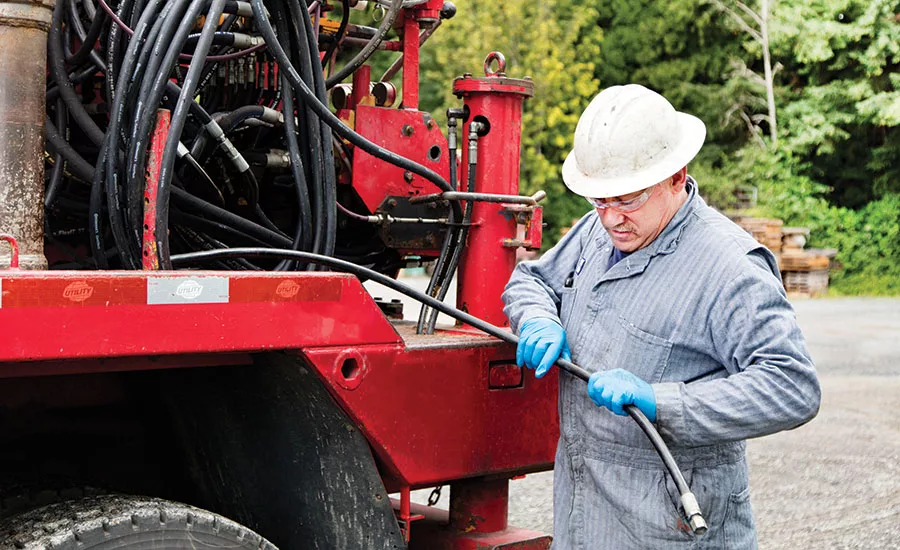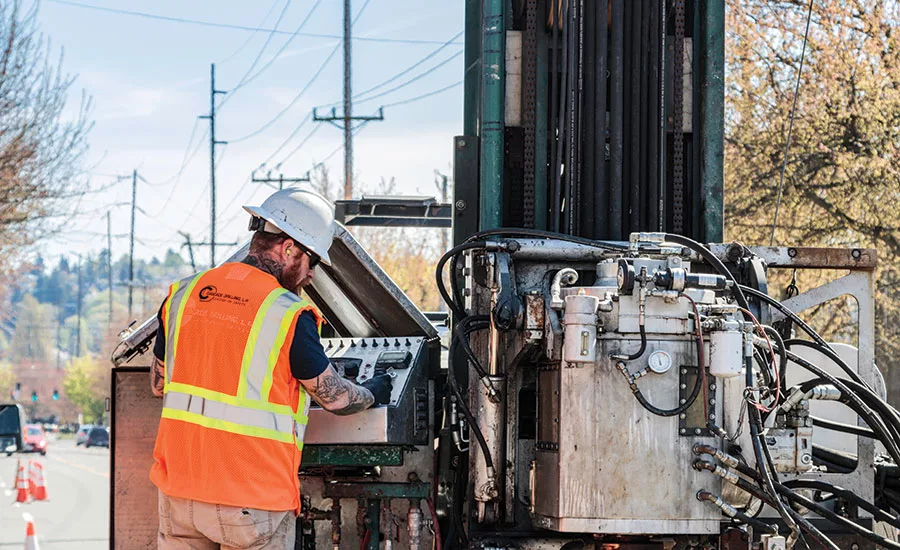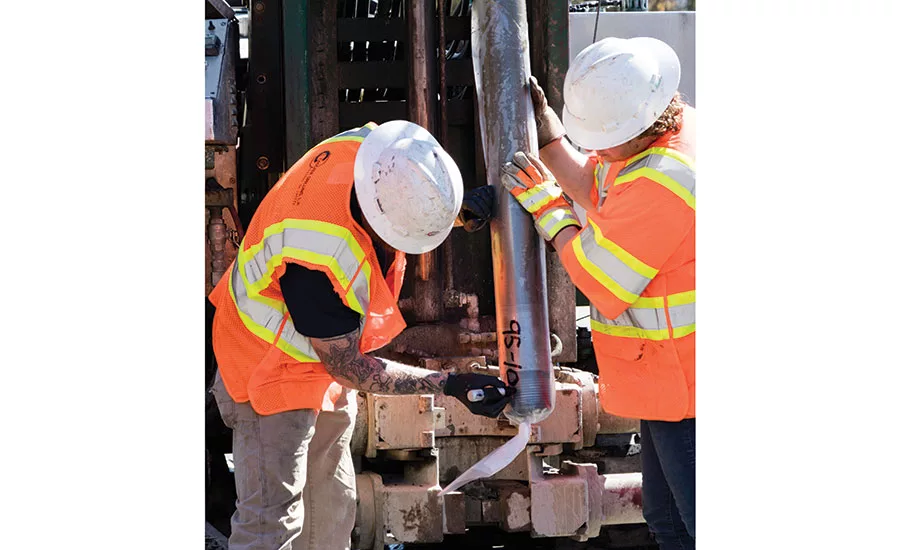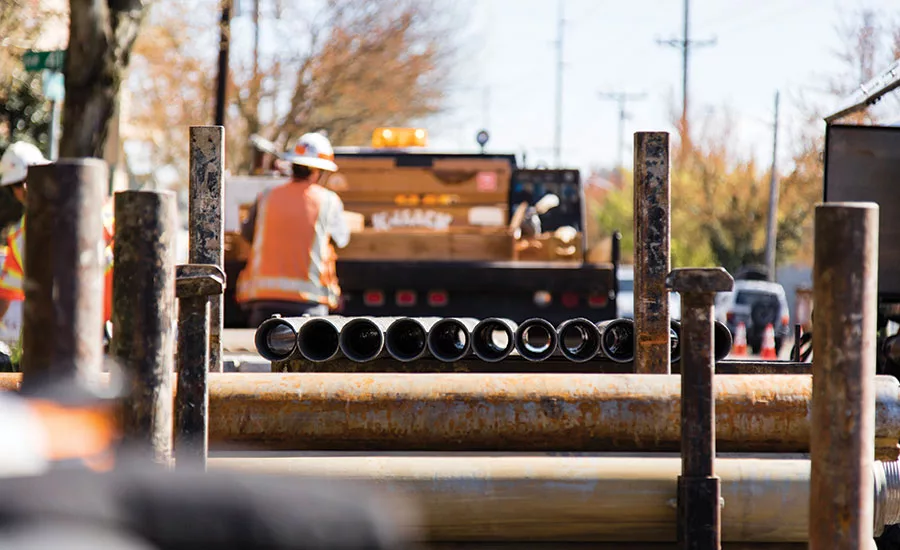How to Maintain a Drilling Rig to Minimize Downtime, Repairs

Jeff Fredinburg, senior mechanic with Cascade Drilling and Technical Services, performs hose inspections. Drilling companies typically don’t make money unless they’re drilling, so maintenance is critical to head off repairs. Source: Stephanie Seek/Cascade Drilling and Technical Services

A rig’s maintenance schedule can depend on below-ground conditions, like lithology and geology, as well as above-ground conditions like mud or even road salt.


Field maintenance is sometimes necessary, but deferring a full scheduled maintenance too long on a piece of equipment can lead to issues. Source: Stephanie Seek/Cascade Drilling and Technical Services
A drilling business works only as hard as its biggest assets: the drill rigs. Keeping them in top shape costs time and money, but ignoring maintenance is the surest way to unscheduled downtime. For tips to optimize uptime, we spoke with Gary Crueger of Cascade Drilling and Technical Services. Cascade runs a variety of rigs in environmental, geotechnical, mining and other areas from almost three dozen offices across the country. Crueger is vice president of safety and administration, so he has a hand in making sure drill crews can depend on the rigs in Cascade’s fleet.
Our conversation has been edited for space and clarity.
Q. First off, give me a little bit of your background. Why should readers listen to you on the topic of rig maintenance?
A. Well, first my history is in large transportation fleets as a private carrier, so over the road transportation, multiple diverse commodities, including regulated hazardous materials, so it is extraordinarily critical in that industry to ensure you have PM (preventative maintenance) to absolutely mitigate and eliminate your over the road liability. Secondly, is our breaks. We do not make any money until our drilling rigs are working, are punching a hole or drilling a well. So keeping those maintained in top order not only produces money for this company, but again manages the liability for both ourselves and our clients by reducing any risk, safety or environmental. And I have experiences in both.
Q. Can you give readers a rough idea of the scope of Cascade’s fleet? What kind of rigs are you deploying and for what types of work?
A. We have over 1,400 vehicles and rigs. That includes rolling stock, light-duty trucks, heavy-duty trucks. Our rig diversity is sonic, air rotary, auger, direct-push — what we consider all conventional, outside of sonic. We are the largest sonic drilling company in the environmental industry, and that’s where a lot of our focus is. But we have a lot of diversity in our services and our technologies to include those other conventional drilling technologies.
Q. I think all manufacturers include a phone-book size manual with each rig purchase. Do contractors generally follow the maintenance checklists and schedules in those, or do you think — like cars — people stick to it for a couple years, then it falls off?
A. That’s a great question. Particularly with drilling rigs, there can be modifications performed by the purchaser for specific needs, so that changes some of the preventive maintenance programming. But a high percentage, well into 90 percent, we follow the original equipment manufacturer’s preventive maintenance schedules and instruction.
Q. Are those manuals just a starting point? That is, what maintenance tips or best practices have you learned over the years go beyond manufacturer recommendations?
A. Well, it’s not just the recommendations that make a PM. You have to look at tolerances, activity — what have they been doing? All of those feed in. There could be conditions that aren’t necessarily covered in an OEM manual that you then have to take into account and may increase the frequency for a specific component or rig relative to its PM. We tailor it, really, to the geography, the business unit, the service lines it provides, and the conditions that test those tolerances. That’s really the outline of producing the PM in which we capture in our system.
Q. For someone considering the launch of a drilling business, what’s a good type of rig that balances ease of use with a high potential for billable jobs?
A. Just like a car, it depends on what you want to do. Each technology is different in its depths and orientation. It depends on what you want to do. Then shop. There are very strong providers, manufacturers across all the conventional and sonic drilling technologies. I tell you I don’t have a favorite. But we’ve had good experiences with some and not so good experience with others, in which we’ve had to put our hands more around the preventive maintenance than what would otherwise be followed in a structured manual produced by the manufacturer.
Q. Let’s talk fleet maintenance. How are systems different for managing a large fleet versus, say, a small shop with just a couple rigs?
A. Well, because we do a lot of sourcing. Vehicles themselves — we don’t want to be experts in vehicle maintenance. What I mean by that is, we want providers and particularly prolific producers of vehicles, like Ford or Dodge or Peterbilt, to be the experts. We like our internal maintenance staff focused purely on the rig, purely on the technology that produces the revenue and has the highest risk component for us in order to minimize that liability. So the maintenance of the vehicle, even though we do perform it, we look for sourcing options within certain geographies for those PMs to be conducted. Even down to oil changes, brake changes, transmission fluids. We will use an outside provider.
Smaller company? They could probably do it themselves cheaper. But when you look at the size of our fleet and what would, if we were focused purely on vehicle maintenance, that would mean that our rig maintenance would suffer.
Q. For someone who is a smaller contractor, what kind of systems would help them scale up? Is it just a matter of letting go of some of things like engine maintenance?
A. That’s exactly right. They would have to determine the threshold in which adding human resources to work on every piece of equipment becomes too expensive or there’s no return in regard to the vehicle maintenance component. What that number is is really hard to determine based on a certain company’s margin expectations, right. It depends on how much money they want to make — private or public. Some are more comfortable at lower margins and lower returns and prefer to keep that in house to have a higher control within the program. Anything outside your control, including just running a F250 or mid-size vehicle down to the dealership, some people don’t have that tolerance. We do. We want our focus on the rigs, not necessarily the vehicles and, again, not to hedge liability. Fleet maintenance is a much more historically sound process within the service community than rig maintenance. You can’t go down to the corner to have your auger rig tuned up with any degree of expertise. We rely on the expertise of the vehicle service suppliers to support that.
Q. Cascade works in many parts of the United States. What are some geographical concerns that a good maintenance plan needs to consider?
A. You know, it’s cold weather, it’s areas that use salt in the roadways, conditions where we might get into mud or seawater. Those are the above ground conditions. The below ground conditions can stress the equipment. Bedrock, clays, sands, so really the geology and the lithology can age a rig based on what we have to drill though. So there are both above ground and below ground conditions that can age — environmental and stress is what it is.
Q. Is there a particular aspect of maintenance that often gets ignored or overlooked?
A. Well, yes, depending on your business cycle. You can have demands on your equipment that don’t allow for scheduled, complete PMs. So you might have to perform field PMs at an abbreviated level to ensure your risk is reduced, certainly first and foremost, but don’t give it all of the A to Z. We keep an eye on that through our equipment control module in Spectrum, which is our operating platform. We watch for those deferments to make sure they’re not extended, and we will stop jobs to perform maintenance on jobsites that we can. But that is a tough one, and I would say merely in the industry that the demand in certain business cycles can defer certain PM aspects, and so you really have to watch that.
Q. Are there maintenance misconceptions you wish people would forget?
A. I’ll tell you what the biggest one is that people think that repair is maintenance. Repair is not maintenance. Anytime you are doing a reactive, acute repair on a piece of equipment that is not planned, then it is certainly not maintenance. Maintenance is planned, it’s preventative, it’s scheduled and it’s got regimentation — certain components, a checklist. That’s the misconception that needs to be cleaned up; repair is not maintenance. We really focus on maintenance as an upstream process to minimize repair. If you’re in a repair situation, you’ve created a liability, you’ve created a loss, you’ve created an interruption — and not always from a lack of maintenance. Some things are just component failure that can be undetected. That’s the biggest misconception, that repair is maintenance, and it’s not. That’s why the focus on maintenance is so critical. It’s an upstream process.
Q. Cascade prides itself on its safety programs. What part does equipment maintenance play in crew safety?
A. It’s in the safety program, so it’s absolutely critical. We know that our largest exposure as a company on the safety side is from drilling. It’s critical that those are synonymous. In fact, the maintenance program, which we call the Maintenance Advantage Program — the MAP — really parallels an outline and overlap to the safety program, because they’re nearly synonymous. Equipment, condition, maintenance, care are really critical to the safety program, and the safety program in its applications, inspections, observations is critical to the MAP. They’re absolutely parallel.
Q. Did I miss anything or is there anything else you’d like readers to know about rig maintenance or how it’s handled at Cascade?
A. It’s just important to understand the name. We call it the Maintenance Advantage Program. It’s several components of maintenance, including compliance, preventative maintenance and the system that supports it. We use a system called Spectrum. Within Spectrum is a module called Equipment Control. All of our equipment is loaded into that, and we can load all of the specifications, parts requirements, PM schedules and any other information we deem necessary to have an effective PM, into that module. With that, we can also capture cost histories and equipment trends. ... What if you have a problem with one rig and you have several of these rigs around the company? We can get that clarity through the module that can then be broadcast back out to those units that might have similar equipment or a similar rig type to ensure that they inspect or evaluate for the same problem. So having a system beyond a paper file folder is absolutely critical to a maintenance and repair program. That’s the very necessary foundation to have for any kind of a maintenance program.
Looking for a reprint of this article?
From high-res PDFs to custom plaques, order your copy today!



